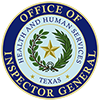OIG responds to COVID-19 pandemic with increased productivity and engagement
Even in a year of unprecedented challenges, the OIG accomplished record recoveries with $503,526,689 recovered for fiscal year 2020 and $626,964,044 identified for recovery. This compares to $421,219,066 recovered in fiscal year 2019 and $170,751,997 identified for recovery. The OIG was also able to maintain, or in some cases exceed, its productivity at pre-COVID-19 levels.
The OIG continues adapting to the changing environment through new methods of fighting fraud, waste and abuse and active engagement with the agency’s various stakeholders. While some divisions within the agency were not able to perform business as usual due to social distancing limitations, the OIG team was able to shift resources or focus that allowed improved productivity. Here is a summary of some of the areas affected by the pandemic:
- Impacts to field work. OIG modified most field work from March – October and transitioned most of its field work online. The Benefits Program Integrity unit (BPI) was able to increase its completed investigations overall, with $56 million identified in 16,582 cases versus $44 million in 15,008 cases in FY 2019. After field operations were suspended in March, Electronic Benefit Trafficking (EBT) shifted its focus from retailers to clients involved in EBT trafficking, resulting in an increased number of cases and identified recoveries for the year. In fiscal year 2019 EBT identified $623,000 in recoveries, which it increased to $2.5 million in fiscal year 2020.
- Extended deadlines. The OIG granted deadline extensions of 30 days in most cases for the first three months of the pandemic. At the end of June some of these extensions were shortened or repealed, but OIG is still granting extensions as needed. While the OIG will still complete its work, this extends the period of time needed to complete an investigation, audit or review and may result in a delay in recoveries.
- Pausing audits and inspections. The OIG paused all audits and inspections from March through early May. This meant no new field work was completed and timelines were extended. The OIG produced 34 audits in fiscal year 2020, four fewer than the number produced the previous year.
- Hospital and Nursing Facility Utilization Reviews. The current rules governing nursing facility reviews require them to be conducted on site. Not entering nursing homes from March through October halted all work in nursing facility utilization reviews, which allowed staff to focus on hospital utilization reviews. While nursing facility reviews decreased from 368 performed in fiscal year 2019 to 157 in 2020, hospital utilization reviews saw an increase in productivity, increasing by 24 percent from 18,098 in 2019 to 23,694 in 2020.
Additionally, teleworking had a positive impact on the OIG. Divisions reported improvement in employee morale, including reduced use of leave, fewer employee interpersonal conflicts, and reduced personal expenses such as commuting expenses due to staff working from home.

